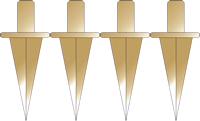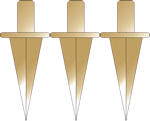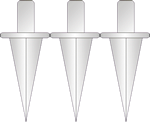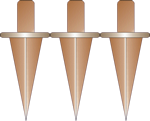Sidebar
Table of Contents
Sâbu & Fabota (Rank & Position)
This page details significant positions within the Poku Saeruo Degonjo and their title and or Honorific. Some Poku'vonai may actually hold more than one title, the proper usage depends on the context. In addition to holding a position members of the Clan have a rank within their profession.
Fabota
A Poku'vonai's Fabota (position) is an indicator of their stature within the clan. Each Fabota has a Sâmi (title, honorific) the term that is used to denote their position. This table shows the Sâmi for each major position.
| Sâmi (Qaktoro) | Title (English) | Description |
|---|---|---|
| Mui | Clan Leader | Current ruler of the Clan |
| Mui-Ta'a | Speaker for the Mui | Person given the authority for speak for the Mui |
| Poku-Ta'a | Clan Leader | Archaic: term for clan leader |
| Tanoi'a | One on the Council | Seated Tanoi (Council) member |
| Jael-Ta'a | Speaker for the Sect | Leader of a Sect |
| Jael-To'â | Assistant Leader | Second of a Sect |
| Ruoka-Ta'a | Speaker for the Ruoka (House) | Leader of a House |
| Ruoka-To'â | Assistant for a house | Second of a House |
| Punla-Ta'a | Speaker for the Punla (Family) | Leader of a Family |
| Punla-To'â | Assistant for a family | Second of a Family |
| Baqlipia | Designate | Oldest child in a Family |
| Hatakur-Ta'a | Speaker for a hunt | Leader of a hunt |
| Tin-Ta'a | Speaker for a ship | Commander of a vessel |
| Tin-To'a (Ship Second) | Second for a ship | Second in command of a vessel |
| Sar | - | Common Honorific (Mr, Mrs, Miss) |
| Sari | - | Plural of Sar |
| Imatloi | Spouse (F) | Wife 1) |
| Imatloa | Spouse (H) | Husband 2) |
Context Examples
A seated member of the Council, Jorun Gefli, is also the Head of a House, as well as of a Family. Here are examples of when each Honorific would be used.
- When representing the Ruoka (House) at a function, or addressing the families within the House he would be referred to as: Ruoka-Ta'a Gefli
- When representing the Punla (Family) at a function he would be referred to as: Punla-Ta'a Gefli
Note: It is always acceptable to refer to a person by a higher Honorific if they have one.
Sâbu
A Poku'vonai holds a specific Sâbu (rank)) within their Jaeli (Sects). All Jaeli (Sects) use the same ranking system so that members of other Jaeli (Sects) and easily identify the rank of others. There are two forms of identification for an individual's rank a symbol and a colored cord. The symbol is a number of stylized daggers. The ranks signify not only the skill level of the individual but also the level of responsibility the person carries. Each rank is paid a Kâbolelpa weekly.
| Rank | Symbol | Cord | Term | Definition | Material |
|---|---|---|---|---|---|
| 10 |  | Black | Jael-Ta'a | Speaker for the Sect | Gold |
| 9 |  | Grey | Kasâvyjo'a | Senior Master | Gold |
| 8 |  | Brown | Kasâvyjo'sa | Master | Gold |
| 7 |  | Brown & Purple | Kasâvyjo | Junior Master | Gold |
| 6 |  | Purple | Sasâvyjo'ka | Senior Journeyman | Silver |
| 5 |  | Blue | Sasâvyjo'sa | Journeyman | Silver |
| 4 |  | Yellow | Sasâvyjo | Junior Journeyman | Silver |
| 3 |  | Yellow & Orange | Sâvyjo'ka | Senior Apprentice | Brass |
| 2 |  | Orange | Sâvyjo'sa | Apprentice | Brass |
| 1 |  | Red | Sâvyjo | Junior Apprentice | Brass |
| - | White | Initiate | - |
OOC Notes
Page Tools
Terms of Service - Privacy Policy
